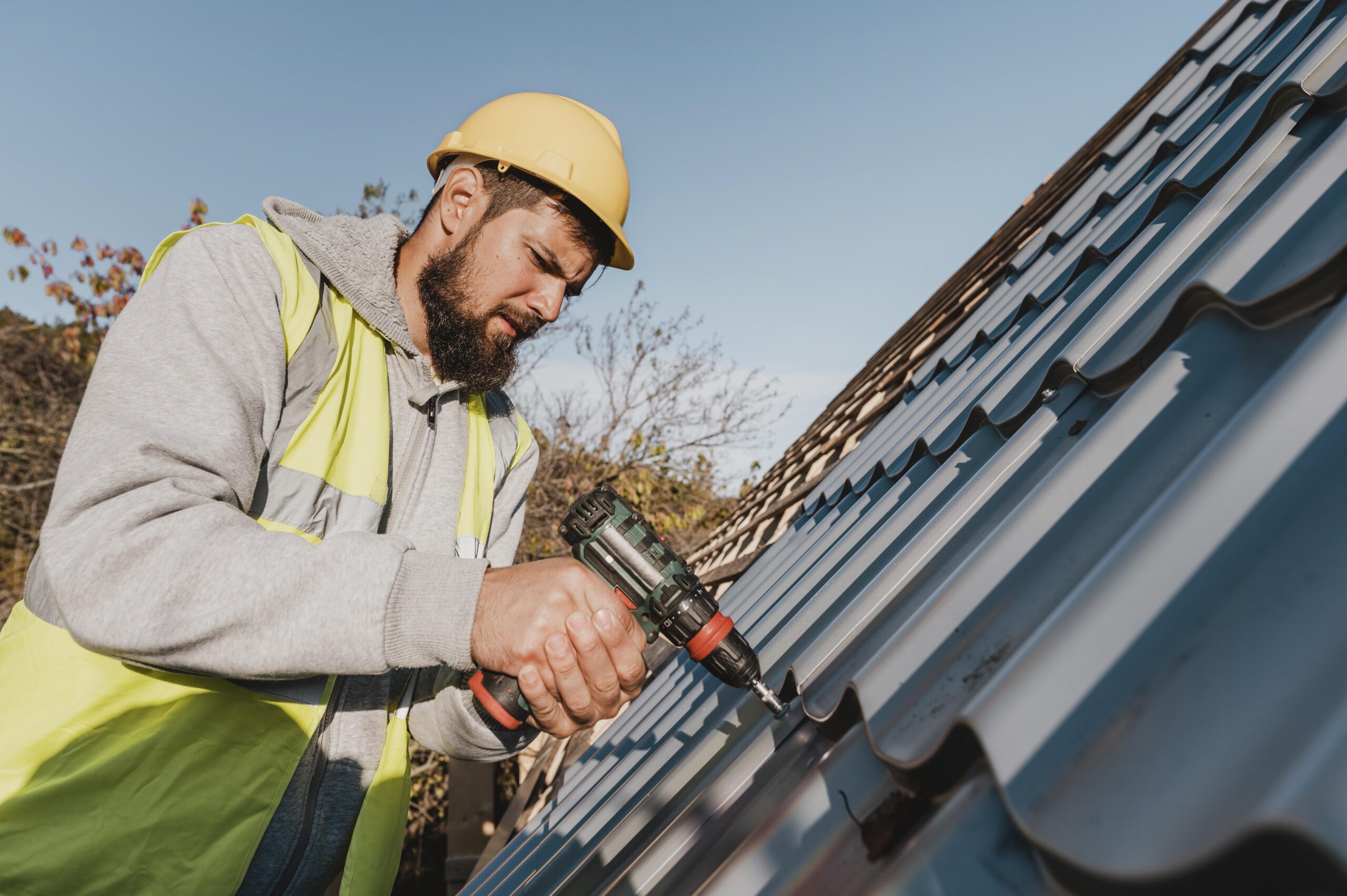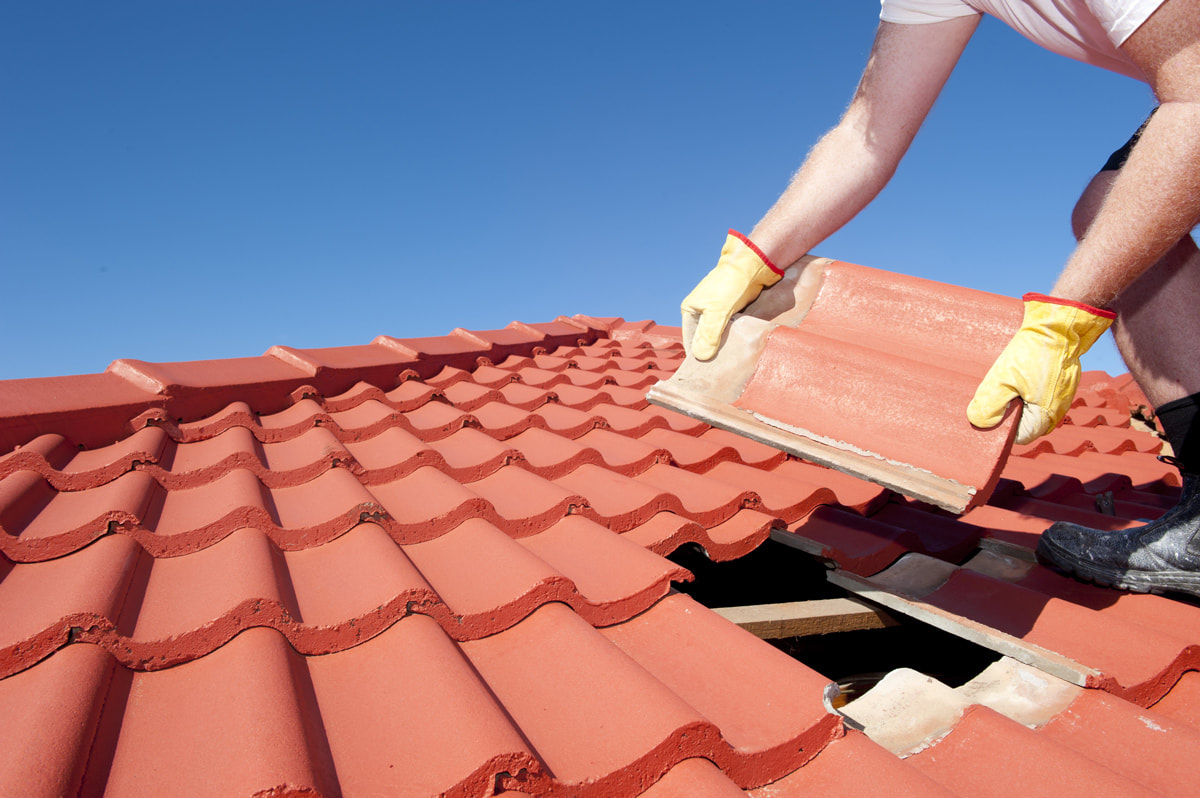Seasonal Roof Covering Repair List: Prepare Your Roofing for Every Weather Condition
By following a seasonal roof fixing checklist, you can remain ahead of possible problems. Let's discover how correct upkeep can guard your home and prolong your roofing's lifespan.
Checking Your Roofing for Winter Months Preparedness
As winter methods, it's necessary to examine your roof covering to confirm it can endure severe climate condition. Begin by looking for missing out on or harmed roof shingles; also a little problem can result in considerable leakages when snow and ice accumulate. Next, analyze the blinking around chimneys and vents-- this location is commonly vulnerable to water breach.
Do not forget to look for signs of drooping or uneven surface areas, as these might show architectural issues. Additionally, verify your gutters are clear; blocked rain gutters can result in ice dams that harm your roof.
 roof repair
roof repair
Springtime Cleaning: Clearing Particles and Checking for Damage
As soon as winter season's hold releases, it's time to take on spring cleansing on your roofing by getting rid of away particles and inspecting for any kind of damages. Begin by evaluating your roof covering for dropped branches, leaves, and other particles that can catch wetness and create rot. A clean roofing system promotes much better drainage and avoids mold growth.
Next, get a durable ladder and carefully inspect tiles for splits or missing pieces. Take notice of areas around smokeshafts and vents, as these spots are prone to leakages. Don't fail to remember to analyze your gutters, guaranteeing they're without obstructions that might lead to water pooling.
While you're up there, look for indicators of wear, like rust on steel flashing or loosened seals around skylights. Resolving them now can save you from pricey repairs later if you identify any type of issues. A little springtime cleaning goes a long way in maintaining your roof covering's honesty.
Summer Warmth: Analyzing Your Roofing for Heat-Related Issues
As summer season warmth increases, it's vital to examine your roofing system for heat-related concerns. Inspect for any tile damage, look for indicators of heat fastening, and evaluate how well your roof ventilates. Taking these steps now can stop larger issues later on.
Examine for Roof Shingles Damage
 roof repair
roof repair
Look For Heat Buckling
Warm buckling is a typical issue that can occur during the scorching summer season months, and it's necessary to examine for it on your roof covering. Beginning by examining your roofing aesthetically; look for any uneven surfaces or lifted edges. If you detect any kind of indications of warm fastening, it's crucial to address them promptly to protect against more damage.
Review Roof Ventilation Performance
After looking for warmth buckling, it is necessary to assess your roofing's air flow performance. Appropriate ventilation assists regulate temperature level and wetness, stopping damage from too much heat. Beginning by examining your vents; ensure they're not obstructed by debris or insulation. Seek indicators of insufficient air flow, like warm buildup in your attic or distorted roof covering products. If your soffit vents and ridge vents work together effectively, you might likewise want to check. If your home really feels stuffy and overheated, consider upgrading to more reliable air flow systems, like powered attic room fans or extra soffit vents. Remember, keeping great air flow not only prolongs your roof's life yet likewise enhances your home's total energy effectiveness, assuring convenience during those warm summer months.
Rainy Period Readiness: Making Sure Correct Water Drainage
As the stormy period approaches, you need to assure your roofing system's drain system prepares to handle hefty rainstorms. Start by evaluating your gutters and downspouts, and make certain they're free from debris. Do not forget to inspect the blinking and seals to avoid leaks and water damages.
Check Downspouts and gutters
Start by checking for any type of noticeable debris, like fallen leaves or branches, that could block the circulation of water. Next, check out the downspouts for obstructions or damages; a blocked downspout can cause water to overflow, potentially damaging your roof and foundation. If you find any issues, address them immediately to stop expensive repairs.
Clean Roof Covering Surface Debris
To ensure your roofing can handle the wet period, it's vital https://modernistpodcast.org/ll-roofing-delivering-excellence-in-roofing-solutions-for-gainesville-and-beyond/ to cleanse any debris from the surface area routinely. Leaves, twigs, and dirt can accumulate, blocking drainage courses and creating water to swimming pool. This trapped water can bring about leakages and damages in time. Order a durable ladder and examine your roof for any build-up. Use a roofing rake or mop to delicately get rid of debris, taking care not to damage the shingles. Don't forget to inspect your seamless gutters too, ensuring they're clear and working properly. After cleaning, monitor your roofing system after hefty rains to find any possible concerns early. Maintaining your roof covering clear of debris is crucial for protecting against expensive repair work down the line.
Inspect Flashing and Seals
After removing your roof of debris, take a closer look at the flashing and seals around smokeshafts, skylights, and vents. If you see any kind of damages, it's vital to fix or replace it quickly. Making certain these elements are in excellent problem will certainly aid maintain appropriate drainage and protect your home from water damages throughout hefty rainfall.
Monitoring and Maintaining Roofing System Seals and Flashing
While it may appear simple to overlook, maintaining and checking roof covering seals and blinking is crucial for protecting against leaks and water damage. Beginning by evaluating the seals around chimneys, skylights, and vents. Try to find any type of splits, voids, or signs of wear. It's best to reseal them with ideal roofing sealant to guarantee a tight fit. if you detect any kind of issues.
Next, analyze the blinking, which guides water away from crucial locations. Inspect for rust, loose areas, or curved sides.
Last but not least, do not neglect to cleanse off any type of debris that could obstruct the seals or flashing. Maintaining these parts in good form will assist guard your roofing versus the aspects and expand its life expectancy.
Seamless Gutter Maintenance: Maintaining Water Flowing Efficiently
Given that your rain gutters play an important duty in guiding rain far from your home, normal upkeep is vital for stopping water damages and foundation problems. Begin by removing debris like leaves, twigs, and dust. A stopped up seamless gutter can lead to water overflow, which might damage your roofing system and siding. Utilize a strong ladder to reach the seamless gutters safely, and use handwear covers to shield your hands.
If you discover any type of damages, fixing or replace the afflicted components without delay. Confirm downspouts are guiding water at least six feet away from your structure.
Ultimately, inspect that your rain gutters are effectively sloped, preferably a quarter inch for every single 10 feet. This incline guarantees water moves efficiently towards the downspouts. Routine maintenance will certainly maintain roof repair gainesville ga your rain gutters functioning efficiently and protect your home from costly repair services.
Scheduling Expert Evaluations for Comprehensive Care
Consistently scheduling professional inspections is vital for maintaining your roofing system's stability. These professionals can identify prospective problems before they develop into costly repair services. Purpose for a minimum of two examinations a year-- one in the spring and one more in the loss. This timing enables you to deal with any type of damage brought on by winter season weather or summertime tornados.
Throughout examinations, professionals will certainly assess shingles, flashing, and air flow, making certain every little thing's in leading shape. They'll likewise look for signs of wear, leakages, or mold and mildew, which you may forget. Arranging these examinations not just prolongs your roofing's life-span but additionally gives you peace of mind.
If you're uncertain regarding the condition of your roof covering, do not think twice to call an expert. Buying these check-ups currently can save you a great deal later on. Prioritize your roofing's wellness, and you'll be well-prepared for whatever weather comes your way.
Frequently Asked Questions
How Commonly Should I Inspect My Roofing System Throughout the Year?
You need to examine your roofing at the very least twice a year, preferably in spring and loss. After severe weather events, look for damage as well. Normal inspections help you capture concerns early and save cash on repairs.
What Signs Suggest I Required a Roof Replacement Rather Than Fixing?
 roof repair
roof repair
Can I Carry Out Roofing System Services Myself, or Should I Work with a Specialist?
You can carry out minor roofing system repairs yourself if you fit with elevations and fundamental devices, yet employing an expert warranties safety and correct work. Do not take the chance of damage; it may be worth the investment for peace of mind.
What Are the Ideal Materials for Roof Repairs in Various Climates?
For different environments, you'll desire products like asphalt tiles for modest locations, steel roof for extremes, and clay floor tiles for hot regions. Always take into consideration regional weather patterns to assure your roof stands up to the aspects properly.
Exactly How Do Roof Service Warranties Impact Seasonal Maintenance Responsibilities?
Roofing system warranties usually specify maintenance responsibilities, so you'll need to evaluate the terms. If you don't maintain your roof as called for, you may invalidate the warranty, leaving you in charge of pricey repair services.
Seasonal Roofing System Repair Work Checklist: Prepare Your Roofing System for Every Climate
When winter season's hold releases, it's time to tackle spring cleansing on your roof covering by removing away particles and checking for any damages. Inspect for any shingle damage, look for signs of warm fastening, and examine just how well your roof ventilates. If you identify any kind of issues, think about contacting a specialist for repair services to maintain your roof covering in leading form and shield your home from possible water damages.
While it may appear very easy to neglect, preserving and examining roof covering seals and blinking is essential for protecting against leakages and water damages.